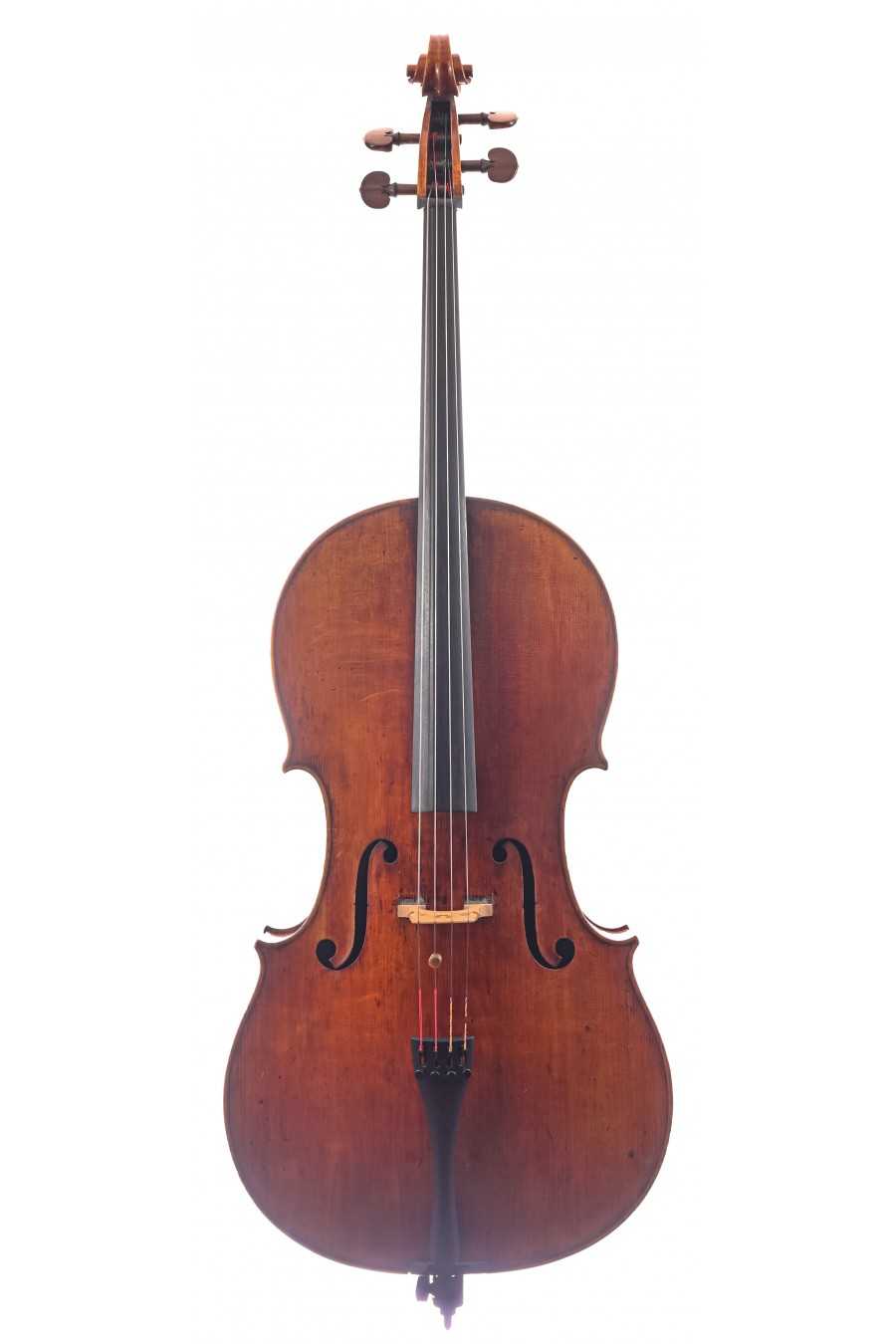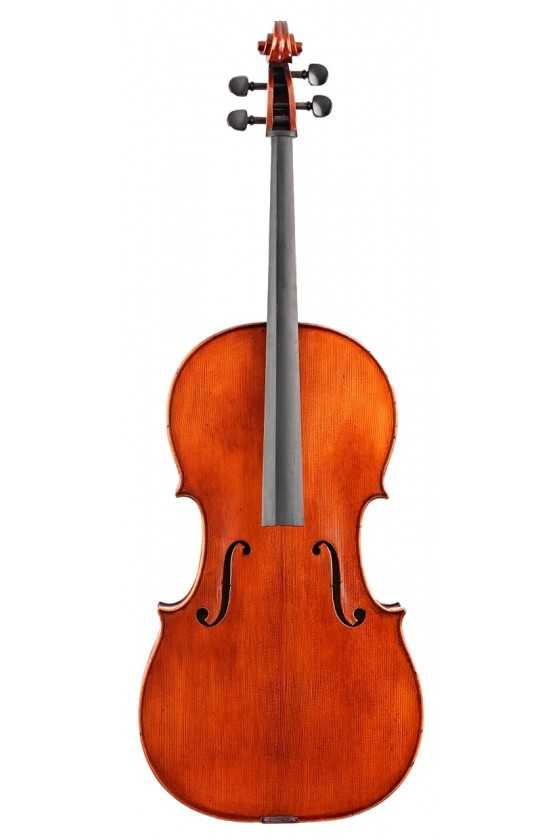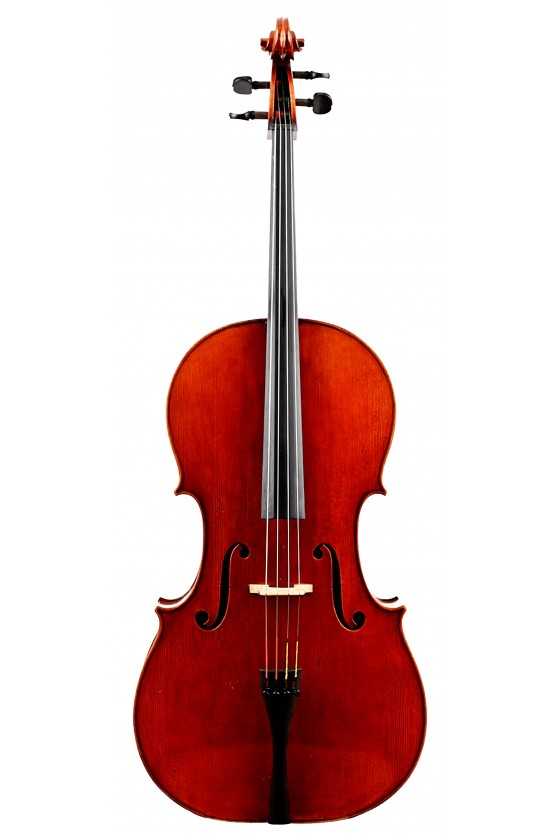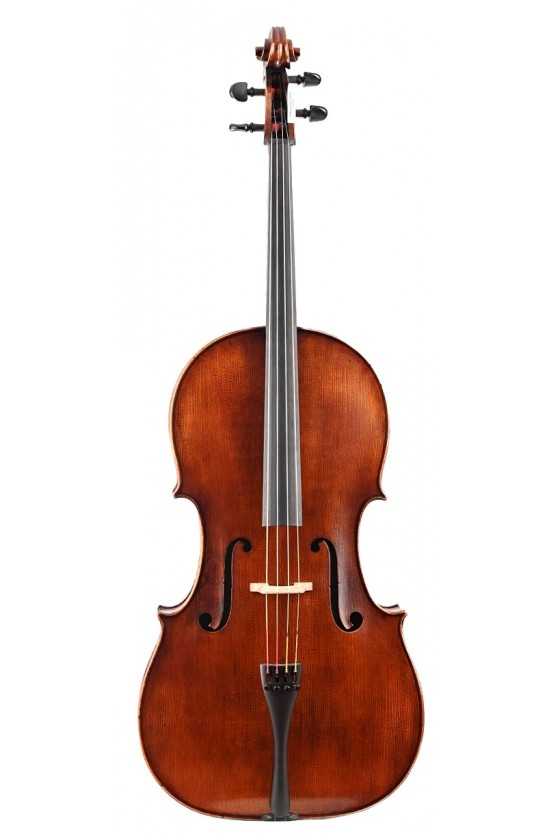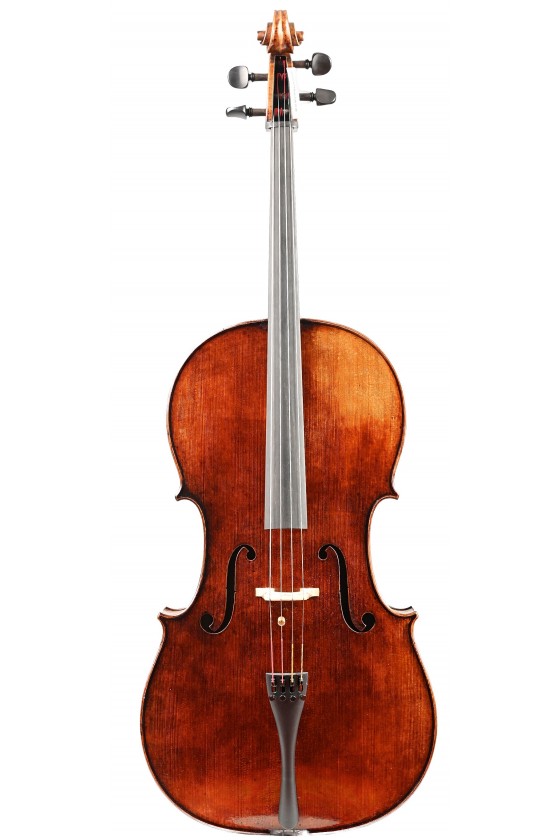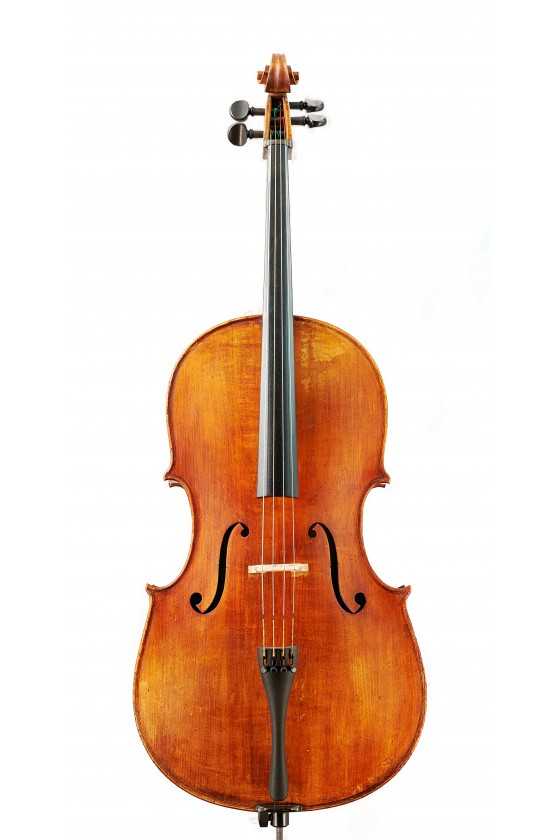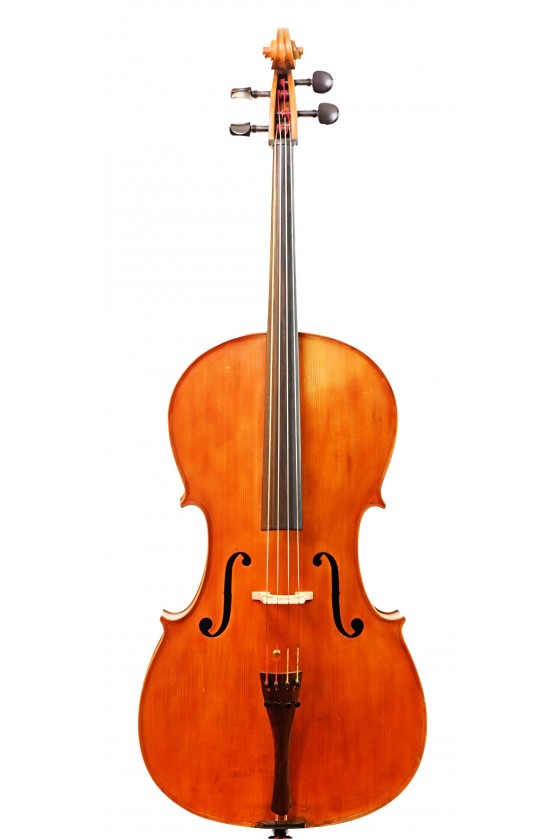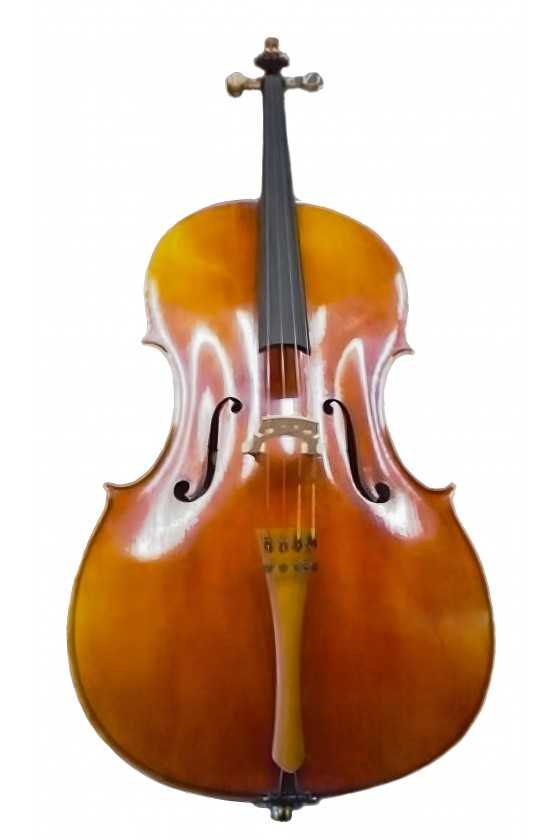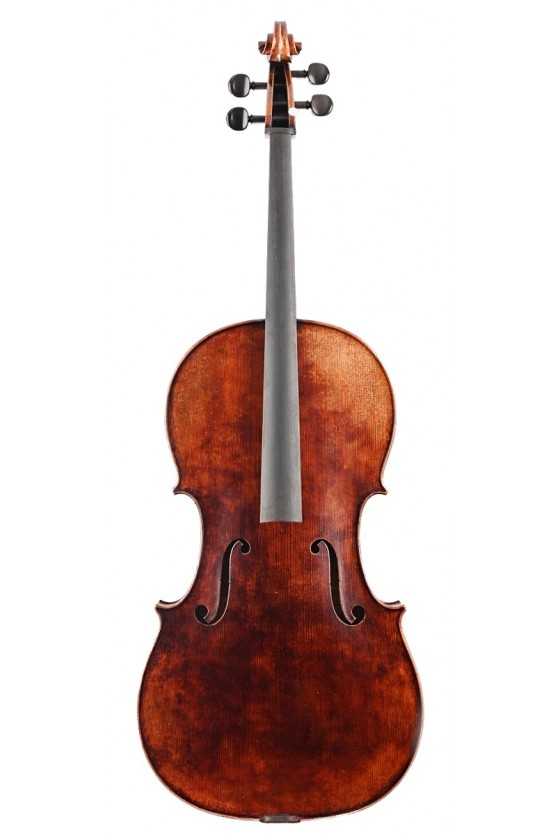Stoehr Cello 4
Stoehr cello - to be set up. The price includes setting up that includes a Bavarian spruce sound post, the highest quality French bridge, ca $600 worth of strings, and a German Carbon Tailpiece.
• Use of matured, high-quality tonewoods
• Beautifully flamed Bosnian maple for the back, rib and neck
• Slow, evenly-grown mountain spruce is used for the top.
• Use Traditional Guild knowledge with modern technology to achieve a tonal optimum.
• Varnish is personally produced, following traditional recipes using only select resins.
• With loving care, each cello, such as this one, is given a special touch.
• Customers repeatedly praised him for the instrument’s light response and strong, full tone paired with the instrument’s inner melodiousness.

